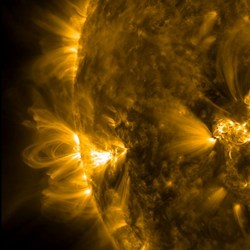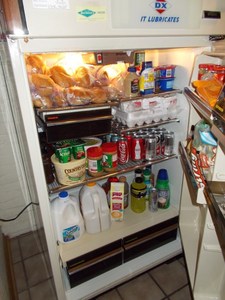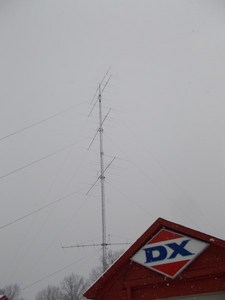 February 26, 2014 Editor: Ward Silver, NØAX | ||||||
IN THIS ISSUE
NEW HF OPERATORS - THINGS TO DO Technician operators really enjoy the fun of operating 10 meter phone during the ARRL International DX Phone Contest, coming up this weekend. With solar flux plenty high enough to open the polar paths, this will be a great time to see what your HF phone privileges can do! Speaking of privileges - you might want to download a copy of the US Amateur Bands chart and there is another specifically for Technicians. BULLETINS The date for Kids Day is wrong on the 2014 ARRL printed calendar - it is 21 June and always on the third Saturday of June. BUSTED QSOS Nothing seriously awry last time! CONTEST SUMMARY Complete information for all contests follows the Conversation section Mar 1-2
Mar 8-9
DX University will again conduct a DXing session at the International DX Convention at the Convention Center in Visalia, California on Friday, April 4th, 2014. Presenters will include DX University faculty members AA7A, K7CU,K7UT, K9LA, N7NG, and W3UR. Morning topics are tailored to the less-experienced DXer, including putting a DXing station together, basic propagation, utilizing resources and actual operating. The afternoon session will consist of a seminar on more advanced DXing and DXpeditioning topics. Register for either or both sessions on the DX University website
Jim AD1C reports that the Country (CTY) Files were updated on 24 February 2014. Installation instructions are posted -- with all the commemorative prefixes on the air, be sure your files are up to date before the ARRL DX contest this weekend! QRZ DX reports that Icom America has announced a firmware upgrade for their IC-7700 transceiver. This update provides enhanced user interface, refined operational controls, improved audio and voice functionality and more. The firmware upgrade will be free to download on-line around March 20. With the ongoing conversion of the Internet from IPv4 to IPv6 addresses, maybe ham radio could get in the swing of things and extend our two-character prosigns to four-characters! Just think of the possibilities as the currently overloaded prosigns are extended:
And when you're done sending these new prosigns, you might want to punctuate them with this big red online button! The 17 February cover of Time magazine announced "It promises to solve some of humanity's most complex problems. It is backed by Jeff Bezos, NASA, and the CIA. Each one costs $10,000,000 and operates at 459 degrees below zero. And nobody knows how it actually works." The CEO of the manufacturer of the D-Wave Two, by all accounts an amazing and mysterious device, quoted several times in the article, is none other than Yankee Clipper Contest Club member Vern W1VB. Despite Vern's personal history, WRTC-2014 Co-chair, Doug K1DG, states "For the record, WRTC2014 will not be using a D-Wave Two for log checking and SDR-recording QSO verification. But I can neither confirm nor deny that a prototype D-Wave Three has been installed at the WRTC2014 HQ hotel's log-checking suite." Doug sounds a bit uncertain. We lost some friends in the contesting world over the past couple of weeks. First came news that three-time WRTC competitor and six-time High Speed Telegraphy world champion Anti HA3OV and his wife were killed in an automobile accident. A few days later we learned that Don VE3RM had died as well. Don trained hundreds of new hams in Ontario and was a fixture at the Dayton Hamvention contest suites every year. As Glenn K6NA reminds us - enjoy the company of your friends, life is short. Web Site of the Week - It was 101 years ago that Edwin Armstrong demonstrated his "regenerative detector" and changed receiving and receivers -- and ham radio -- forever. The story is outlined in this Electronic Design magazine article including an opportunity to copy the sounds of alternator-generated signals as Armstrong heard them, nearly a century ago. WORD TO THE WISE "Never trust a meter that reads zero." Contributed by Bill W6WRT. The World Wide Radio Operators Foundation (WWROF) will be hosting a webinar presentation at 2000 UTC on March 8th by Bill Karle VE4KZ on Antenna System Planning. While many of us are locked in the middle of winter, it's never too early to begin thinking about spring and new antennas or improvements to an existing system. Join Bill as he looks at a typical ham station, assesses antenna needs, develops a solution, constructs, and then reviews performance. (Thanks, Ken K4ZW)
Here's a neat story about 12-year-old Rohan Agrawal KG6LXV who is cutting a wide swath through the Silicon Valley robotics community. Watch for a lot more from Rohan! (Thanks, Patty KS7L) Pete NSØD sends a link to this video showing a handy way to make sure your CD is really, really, really erased. Rewrites? Not so much. The initial results for CW and Phone weekends of ARRL November Sweepstakes have been posted online. The articles (CW by Kelly VE4XT and Phone by Steve N2IC) feature category winners, Top Ten tables, Division Winners, and Region Leaders. So that we might all understand and possibly justify falling short of the Clean Sweep, the highly entertaining Rare Section rankings are also available. Preliminary results for the January CW North American QSO Party are now available. Please report any problems directly to the contest manager, Chris KL9A. Similarly, preliminary results for the February CW Sprint are also now available and the contest's management at the Boring Amateur Radio Club is standing by for any issues you may notice. (Thanks, NCJ Editor, Kirk K4RO) If you are chasing band-mode counters for the ARRL Centennial QSO Party, a leaderboard is now posted online and updated regularly! California QSO Party committee member, John K6MM, writes in that "I just posted the final results for the 2013 California QSO Party, including downloadable certificates. Over 800 logs were processed within 90 days after the log submission deadline of October 31, 2013. As in the Winter Olympics, several new records were set during CQP 2013! 37 plaques and 40 bottles of wine will be given to the qualifying Top Dogs."
Helmut DF7ZS has published the final results for the 2013 WAE SSB DX Contest with "some very close results in the top scores, but also some very clear winners on the first places." The final WAE database had 311,538 QSOs and 262,684 QTCs from 1,326 entrants, a total of 17,188 call signs in the logs. 199,799 QSOs could be directly crosschecked log-to-log, 90,616 verified indirectly by "tracking active call signs in the database that have not submitted a log." Thanks go to DF1QR, DL2NBY, DJ4MH and DL6MHW for log checking and software updating. (Thanks, Daily DX) You can find the CQ World Wide winners over the years for any location or category online. Hours of fun and it settles all those after-the-meeting arguments! (Thanks, CQ WW Director, Randy, K5ZD) OPERATING TIP Phone contesting (or emergency net control, for that matter) is a very physical activity with a lot of wear and tear on the vocal cords and your "hollerin' parts". Minimize stress on yourself (and others in the same house or EOC) by setting your audio and mike gain to levels that are comfortable for listening and speaking. The louder you yell, the worse your audio gets, making it hard to understand, so you tend you yell louder, and...well, you get the idea. Speak softly and submit a big log! (I know several ops who take the opposite tack and do okay, though...) Safety was a topic of discussion on the Amps reflector recently, leading to some good advice from Jim W8ZR. "Be sure to wear safety glasses if you are working on an RF deck and the HV fuse is visible and uncovered. If it blows, tiny pieces of glass fly everywhere. It's probably a good idea to slip a loose-fitting piece of fiberglass spaghetti over the fuse to catch the pieces." Vic K2VCO recounted some personal "adventures" and suggested this simple rule for working around high voltages: "Clean up, put the tools away, make sure you have plenty of space and time to work -- first. And do it in the morning!"
In the endless quest for flat surfaces onto which stuff may be put, Instructables contributed this useful and sturdy shelving design that uses industrial pipe and fittings. Tim K3HX found a website called Tubebooks with links to lots of books on vacuum tube technology. Solid-state may be coming on strong but there are a lot of tubes still generating lots of watts on the ham bands! Recent tips on putting in and pulling out ground rods sure got everyone's attention! Glenn WØGJ asks, "Ever drive a wobbling ground rod with a sledge hammer? (I) miss about 80% of the time!" Your editor couldn't agree more. Even though I prefer to use a fence post driver to get the rod started (talk about good exercise!) the hammer has to be used for the final foot or so. And the tired-er I get, the more likely this is to produce a Looney Tunes-like "boooIINNNGGGGgggzzzzwobbidawobbidawobbida..." Glenn has just the ticket for keeping that rod steady - a simple steadying jig. At least that way, you'll know it's you missing and not the rod moving! Frank KR1ZAN found this interesting Macworld article on tools for computer repair. He found the magnetizer-demagnetizer and variable temperature heat gun of particular interest but the article mentions enough different tools that there is something for every shop. Technical Web Site of the Week - Ground radials are plenty important and there is a lot of literature on them but it's sprinkled all over the web, it seems. Ross KB8NTY has done us all a big favor by collecting links to them in a single place - his own website. Thanks, Ross! The Boundary Problem - Part Two In the previous issue, I defined several terms and ideas that form the foundation on which today's radiosport competitions - contests - are built. How precise should the definitions and rules be? When asked by a journalist "What is complementary to truth?" renowned physicist Neils Bohr is said to have replied, "Clarity." Contest sponsors must continually balance the need for broad understanding with the need for verifiably (and enforceably) precise definitions and rules.
Each contest sponsor adds certain constraints to the basic definitions. For example, ARRL contests and CQ Worldwide limit the physical size of a station to a circle 500 meters in diameter. Interestingly, neither places any restriction on vertical size, which allows antennas on buildings hundreds of feet high and the famous W7RM Foulweather Bluff station with transmitting antennas on a cliff and receiving antennas down below on a beach. Let's start with the classic Single-Operator category in the ARRL International DX Contest and see how each term applies without trying to be exhaustive and ignoring power sub-categories: Boundary - all equipment must be contained within a circle 500 meters in diameter. Station - Total transmitter power output is limited to 1500 watts for a single signal. In addition, the rules prohibit the use of automated multi-channel decoders, such as CW Skimmer, although this technology item is grouped with information constraints in rule 2.1.1 of the HF Contest - General Rules. Operator - Only one operator is allowed to manipulate equipment inside the station boundary during the contest period. There are no restrictions on the means by which the operator performs the manipulation. Information - Two kinds of information are covered in the rules; RF and data.
The other single-operator categories are created by either relaxing or adding constraints: Single-Operator Unlimited eliminates the boundary-crossing restriction on data about the operation of other participating stations. You may now use publicly available spotting information from the Internet or listen to a spotting net, for example. Station equipment may now include an automated multi-channel decoder such as a CW Skimmer. Single-Operator Single-Band is the same as Single-Operator but restricts RF signals crossing the station boundary to a single band. Note - that restriction also prohibits operating on another band for soliciting stations to come work you on the contest band. How about the Multioperator categories? Multioperator, Single Transmitter starts with the rules for Single-Op Unlimited and extends them by allowing more than one operator to manipulate the station equipment. The restriction of only one transmitted RF signal at a time is still in place. Additionally, limits are placed on the number of bands on which that signal may be transmitted during a 60-minute clock hour. ie, band-change rules. Note that any number of transmitters can be used during the contest by either single- or multi-operator participants, just one at a time. Multioperator, Two Transmitter allows one or two simultaneous RF signals and requires them to be on different bands, again with limited numbers of band changes. Multioperator, Multitransmitter increases the number of signals to one per band and removes all band change restrictions These categories should more accurately be "Single-Signal" or "Multisignal" categories since the rules say nothing about the number of transmitters used for a single call sign! Having figured out how to re-picture our basic contest categories in these terms, where do we go from here? Perhaps a map would be useful - let's unroll it and plot a further course next time. 26 February through 11 March 2014 An expanded, downloadable version of QST's Contest Corral in PDF format is available. Check the sponsor's Web site for information on operating time restrictions and other instructions. HF CONTESTS ARRL International Phone DX Contest--Phone, from Mar 1, 0000Z to Mar 2, 2359Z. Bands (MHz): 1.8-28. Exchange: RS and state, province, or power. Logs due: Apr 21. Rules Open Ukraine RTTY Championship--Digital, from Mar 1, 1800Z - See website. Multiple time periods. Bands (MHz): 1.8-28. Exchange: Regional abbreviation and serial. Logs due: Apr 30. Rules OK1WC Memorial Contest--Phone,CW, from Mar 2, 1600Z - See website. Multiple time periods. Bands (MHz): 3.5, 7. See website for bands. Exchange: RS(T) and serial. Logs due: 5 days. Rules ARS Spartan Sprint--CW, from Mar 4, 0200Z to Mar 4, 0400Z. Bands (MHz): 3.5-28. Monthly on the first Monday evening local time. Exchange: RST, S/P/C, and power. Logs due: 2 days. Rules YL CW Party--CW, from Mar 4, 1900Z to Mar 4, 2100Z. Bands (MHz): 3.5. Exchange: RST, serial, if YL "YL," name. Logs due: Mar 31. Rules John Rollins Memorial DX Contest--CW, from Mar 5, 2300Z - See website. Multiple time periods. Bands (MHz): 7,14. Exchange: RS, name, and S/P/C. Logs due: 4 weeks. Rules NS Weekly Sprint--CW, from Mar 7, 0230Z to Mar 7, 0300Z. Bands (MHz): 1.8-14. Weekly on Thursday evenings local time. Exchange: Serial, name, and S/P/C. Logs due: 2 days. Rules RSGB Commonwealth Contest--CW, from Mar 8, 1000Z to Mar 9, 1000Z. Bands (MHz): 3.5-28. Exchange: RST and serial (Commonwealth only). Logs due: 16 days. Rules Straight Key Weekend Sprintathon--CW, from Mar 8, 1200Z to Mar 9, 2359Z. Bands (MHz): 1.8-28, 50. Exchange: RST, QTH, name, member nr if member. Logs due: 5 days. Rules AGCW QRP Contest--CW, from Mar 8, 1400Z to Mar 8, 2000Z. Bands (MHz): 3.5-28. Exchange: RST, serial, class, AGCW number or NM. Logs due: Mar 31. Rules QRP ARCI HF Grid Square Sprint--CW, from Mar 8, 1500Z to Mar 8, 1800Z. Bands (MHz): 3.5-28. QRP calling frequencies. Exchange: RST, 4-char grid square, QRP ARCI nr or power. Logs due: 14 days. Rules EA PSK63 Contest--Digital, from Mar 8, 1600Z to Mar 9, 1600Z. Bands (MHz): 3.5-28. Exchange: RST and serial or EA province. Logs due: Mar 31. Rules Idaho QSO Party--Phone,CW,Digital, from Mar 8, 1900Z to Mar 9, 1900Z. Bands (MHz): 3.5-28. CW 35 kHz above band edge; Phone 7.260, 14.260, 21.335, 28.470 MHz, plus 50, 144, 440 MHz. Exchange: RS(T) and ID county or S/P/C. Logs due: 30 days. Rules North American RTTY Sprint--Digital, from Mar 9, 0000Z to Mar 9, 0359Z . Bands (MHz): 3.5-14. Exchange: Both call signs, serial, name, and S/P/C. Logs due: 7 days. Rules Wisconsin QSO Party--Phone,CW,Digital, from Mar 9, 1800Z to Mar 10, 0100Z. Bands (MHz): 3.5-28, 50+, CW 3.550, 7.050, 14.050; Phone 3.890, 7.230, 14.290, 21.350, 28.400 MHz. Exchange: WI county or S/P/C. Logs due: Apr 10. Rules VHF+ CONTESTS Worldwide EME Contest--Phone,CW, from Mar 8, 0000Z to Mar 9, 2400Z. Bands (MHz): 2.3G. Exchange: TMO/RS(T) and "R". Logs due: Jun 15. Rules Straight Key Weekend Sprintathon--CW, from Mar 8, 1200Z to Mar 9, 2359Z. Bands (MHz): 1.8-28, 50. Exchange: RST, QTH, name, member nr if member. Logs due: 5 days. Rules Wisconsin QSO Party--Phone,CW,Digital, from Mar 9, 1800Z to Mar 10, 0100Z. Bands (MHz): 3.5-28, 50+, CW 3.550, 7.050, 14.050; Phone 3.890, 7.230, 14.290, 21.350, 28.400 MHz. Exchange: WI county or S/P/C. Logs due: Apr 10. Rules LOG DUE DATES February 26 through March 11
ARRL Information Click here to advertise in this newsletter, space subject to availability. Your One-Stop Resource for Amateur Radio News and Information ARRL membership includes QST, Amateur Radio's most popular and informative journal, delivered to your mailbox each month. Subscribe to NCJ - the National Contest Journal. Published bimonthly, features articles by top contesters, letters, hints, statistics, scores, NA Sprint and QSO Parties. Subscribe to QEX - A Forum for Communications Experimenters. Published bimonthly, features technical articles, construction projects, columns and other items of interest to radio amateurs and communications professionals. Free of charge to ARRL members: Subscribe to The ARRL Letter (weekly digest of news and information), the ARES E-Letter (monthly public service and emergency communications news), Division and Section news -- and much more! ARRL offers a wide array of products to enhance your enjoyment of Amateur Radio. Visit the site often for new publications, specials and sales. Donate to the fund of your choice -- support programs not funded by member dues! Reprint permission can be obtained by sending email to permission@arrl.org with a description of the material and the reprint publication. ACKNOWLEDGEMENTS ARRL Contest Update wishes to acknowledge information from WA7BNM's Contest Calendar and SM3CER's Contest Calendar. | ||||||











